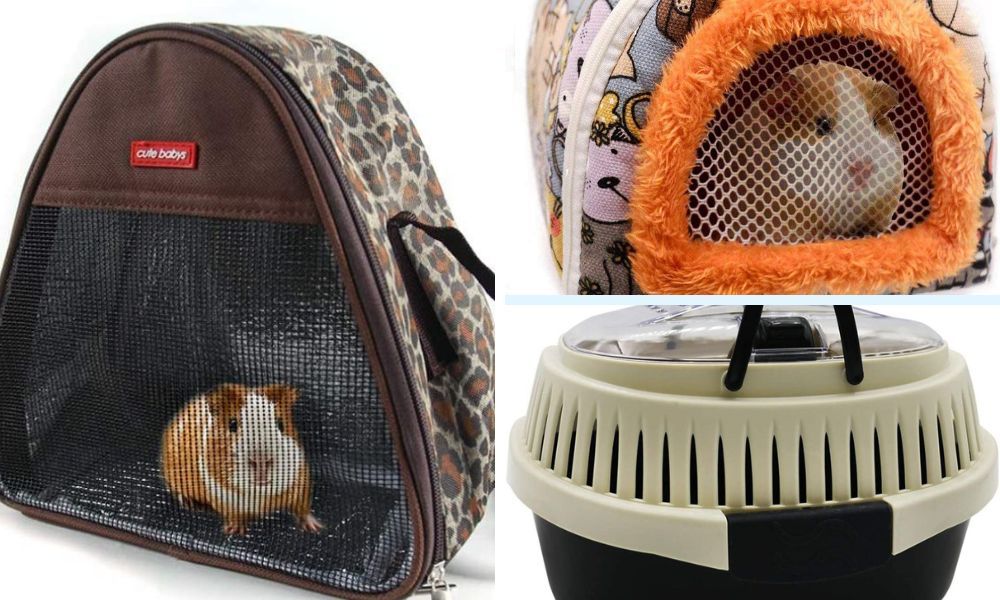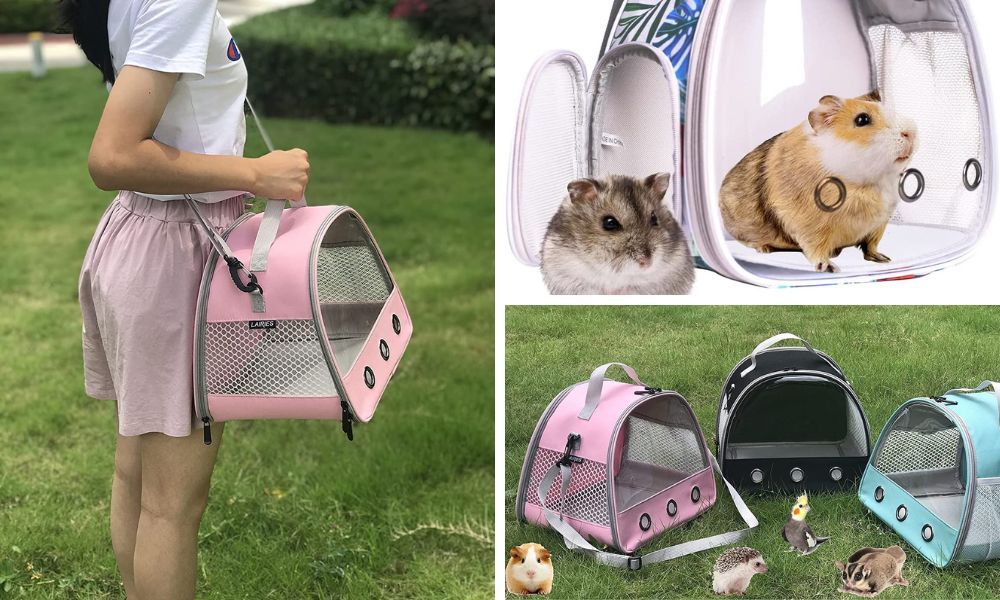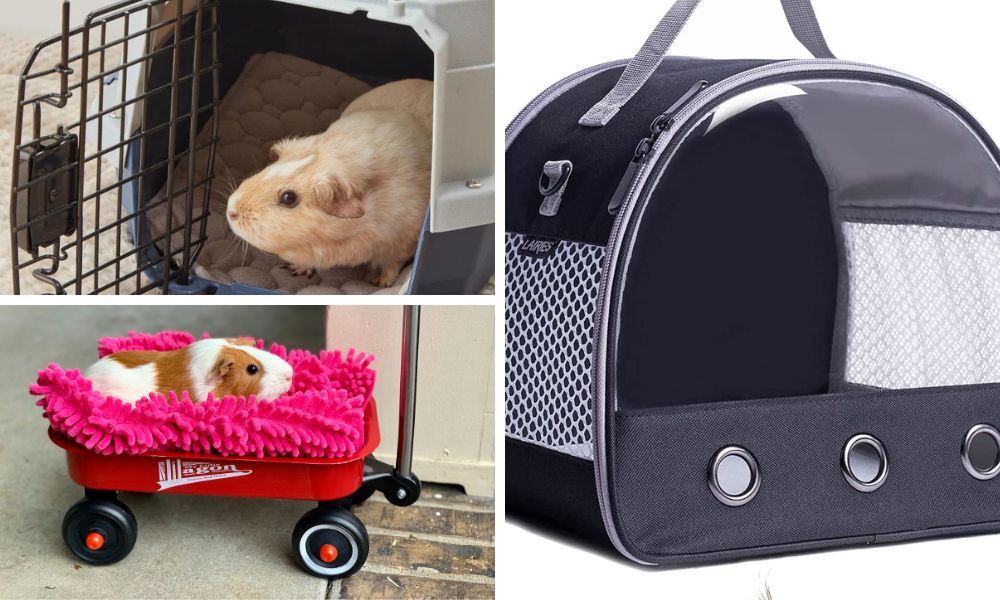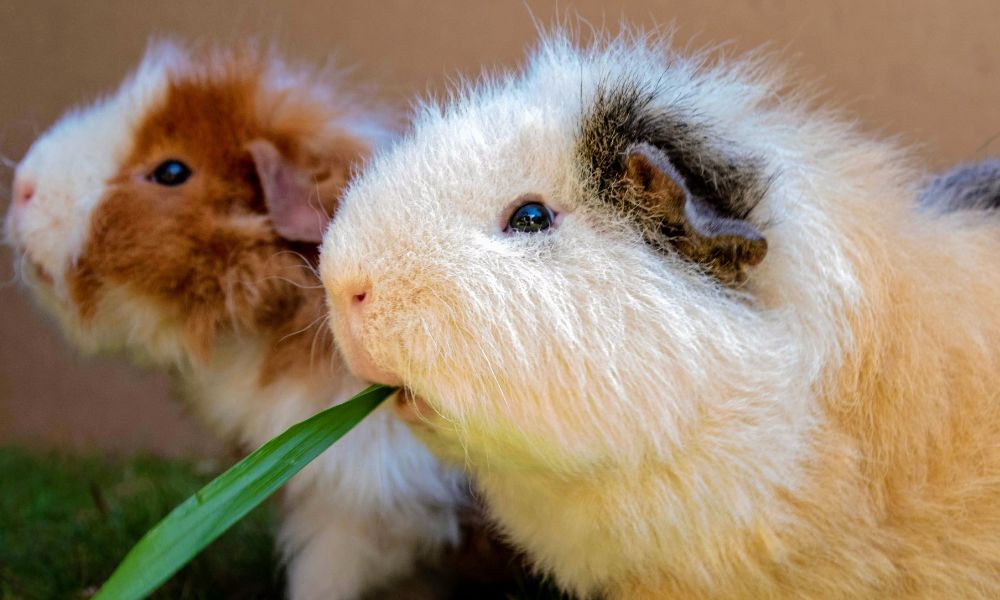Travel Cages for Guinea Pigs: Tips for Ensuring Your Pet's Comfort and Safety on the Go
Are you worried about your pet guinea pig's comfort and safety when traveling? We are going to show you the best cages for guinea pigs, as well as provide tips and tricks for keeping them safe on the go.

It's summertime, and the living is easy... if you're not a guinea pig owner. For those of us who have little furry friends that we love and need to take care of, summer travel can be a bit of a challenge. We want to take our guinea pigs with us, but we also want to make sure they stay safe and comfortable during the journey. So, what's the solution? Travel cages for guinea pigs, of course!
In this post, we'll give you some tips on how to choose the right travel cage for your furry friend to ensure a safe and happy trip. We have got all the tips and tricks to make sure your furry friend stays comfortable and stress-free in their travel cage. Guinea Pigs are precious little creatures and deserve all the care and attention possible, even when they accompany you on your travels. So, without further ado, let's dive into the details of traveling cages for guinea pigs.
Size matters
First and foremost, when choosing a travel cage for your guinea pig, size matters. Don't be tempted to go for a smaller cage just because it's easier to carry. Your guinea pig needs enough space to move around, stretch, and be comfortable during the journey. Ideally, a travel cage should be twice the size of your guinea pig but not too big that they can slide around. Therefore, a cage size of 12" x 18" for one adult guinea pig is highly recommended.
Choosing the right travel cage for your guinea pig is crucial. A travel cage should be big enough for your guinea pig to move around and turn comfortably, and yet not too big that it becomes a logistical nightmare to transport. A well-ventilated and sturdy cage with enough space for your little furry friend's food, water, and bedding should be an ideal choice. A good option is a plastic cage with a solid bottom, that keeps them dry and comfortable. Avoid metal cages that don't have a solid base or floor mesh that can be dangerous for your guinea pig's little feet.
Solid bottoms
Secondly, look for travel cages that have solid bottoms. Avoid cages with wire flooring as it can cause injury to your guinea pig's feet, and it may cause them to feel unstable. A solid bottom also helps protect your guinea pig from any sharp objects or surfaces during travel. Amazon has the best guinea pig pet carrier choices, plus a host of other supplies to help make getting out of the house as safe and easy as possible for your small pets. A good guinea pig travel carrier will have adequate ventilation, escape-proof design and sturdy construction.

Material
The material of the travel cage is also important. Most travel cages for guinea pigs are made of plastic or metal. While both materials have their advantages, plastic cages are usually more lightweight and easier to carry around. Some cages come with handles, which makes carrying them even more convenient. But metal cages are often more durable. No matter which material you choose, just make sure it's sturdy and secure. You'll need to get a sturdy carrier or travel cage and monitor your guinea pig closely for signs of distress.
Proper ventilation
Travel carriers provide a nice, safe enclosure where they can feel comfortable while you're taking them from point A to point B. Make sure the travel carrier has proper ventilation. Guinea pigs are sensitive to heat and humidity, so the cage needs to have good airflow to help keep them cool during the journey. Look for guinea pig carriers with mesh or small openings along the sides or top of the cage.
Accessories
Preparing the travel cage environment is equally important. We suggest a layer of newspaper or pet-friendly bedding material such as hay or fleece bedding. If your guinea pig has a special eating or drinking preference, you should pack enough food, water, or treats that they will need during their journey. You don't want your travel buddy to starve or get dehydrated while on the go. Also, remember to wash the bedding regularly and replace with fresh bedding every time you use the travel cage.
You might want to consider getting some additional accessories for your guinea pig's travel cage. These can include food and water bowls, bedding, toys, and even a litter box. All these items will help make your guinea pig feel more comfortable during the trip.
Secure and stable
You must ensure that your guinea pig is secure and stable in the travel cage. During travel, especially in cars, there can be sudden jolts, turns, and bumps that can cause the cage to move or fall on your guinea pig. You can ensure stability by using car seat belts or packing the cage tightly with soft materials that will provide cushioning. If possible, avoid keeping their cage in the trunk where it is bumpy and extremely hot/cold. Instead, keep it in the backseat, where you can check on their well-being regularly. If you plan to take a your guinea pig on a flight trip, please definitely check to see if the travel carrier is airline approved. Don't put the carrier in direct sunlight and secure the travel carrier so that it won't slide or tip. Some guinea pig carriers contain detachable and adjustable shoulder strap and top handles to carry them, or slide over luggage handle, or secure it in the car with seatbelt.
Entertaining
Kkeeping your guinea pig preoccupied and entertained while traveling is a must. You can use their favorite toys, treats, or anything that they enjoy doing. You can even play soothing music so they don't get overwhelmed with noise or traffic. Remember, stress can be overwhelming for guinea pigs and you want to make their journey as peaceful and stress-free as possible. Therefore, providing them with comforting and reassuring surroundings and sounds is important.

Pit stops and breaks
Planning for pit stops and breaks along the way is an essential part of guaranteeing your guinea pig's comfort. Guinea Pigs need time to stretch their legs, eat and drink, and relieve themselves. Therefore, planning for breaks where you can take your guinea pig out of their travel cage and let them run around for a few minutes is important. However, make sure the area is safe, enclosed, and there are no predators or dangers around. It's also the perfect time to refill their food and water supplies and give them a little TLC.
FAQs
What should I put in my guinea pig carrier?
When packing your guinea pig's travel cage, always make sure to include food, water, bedding, a litter box (if they are toilet trained), and their favorite toys. Put paper bedding , Aspen, a hand/dish towel, a puppy pad, or a fleece pad (fleece with an absorbent material attached) inside the bottom of the carrier.
How often should I stop for breaks?
We suggest planning for regular breaks during long trips to give your pet guinea pig time to move around and relax. Generally, plan for a break every two to three hours. But don't forget to check on your guinea pig regularly in between those breaks too!
What is the right size pf Guinea Pig Travel Cage for two guinea pigs?
If you are travelling with two guinea pigs, then you should get a carrier that is at least 18 inches wide and 24 inches long. You want to make sure the cage isn't too crowded for your pets and they have enough space to move around comfortably. Additionally, it's important to remember that if your guinea pig is particularly active or large, you may need to get a larger cage.
What if my guinea pig gets scared during the journey?
If your guinea pig seems anxious or scared during travel, you can try calming them down by playing soothing music or speaking softly to them in a comforting tone. It's also important to provide a safe and comfortable environment for your guinea pig by ensuring their travel cage is well-ventilated, secure, and stable. If these techniques don't seem to help, then it may be best to consult your vet for additional advice.
Is there anything else I should consider when taking two guinea pigs for trip?
If you are taking two guinea pigs on a trip, make sure to have two separate travel cages so they can each have enough space. Additionally, when packing their food and water supplies, double-check that you have enough for both of them. It's also important to remember that guinea pigs are social creatures, so try to schedule in time together during breaks to ensure that they have enough bonding time. Finally, make sure that their travel cages are securely placed in the car and that both of them have access to proper ventilation.

At the end...
Traveling with a guinea pig can be a fun and rewarding experience. Remember to take your time when choosing the right travel cage and preparing for the journey. You want your guinea pig to feel comfortable, safe, and entertained while on the move. Also, don't forget to check on them during the journey, keep their bedding fresh, and plan for breaks along the way. If you follow these tips, you are sure to have an enjoyable journey with your little furry friend. Safe travels!
Even if you're just going on a short trip, your guinea pig's safety and comfort should always be a top priority. By following these tips, you can ensure that your furry friend will have a stress-free and safe journey. Remember to give your guinea pig time to get used to their new travel cage before the trip and always check up on them while traveling. With the right travel cage, your guinea pig can enjoy the summer adventures with you!
Looking for the best travel carrier? We have done all the research for you and put together our list of best guinea pig carriers you can buy today! Tap the link below to see the list now!

